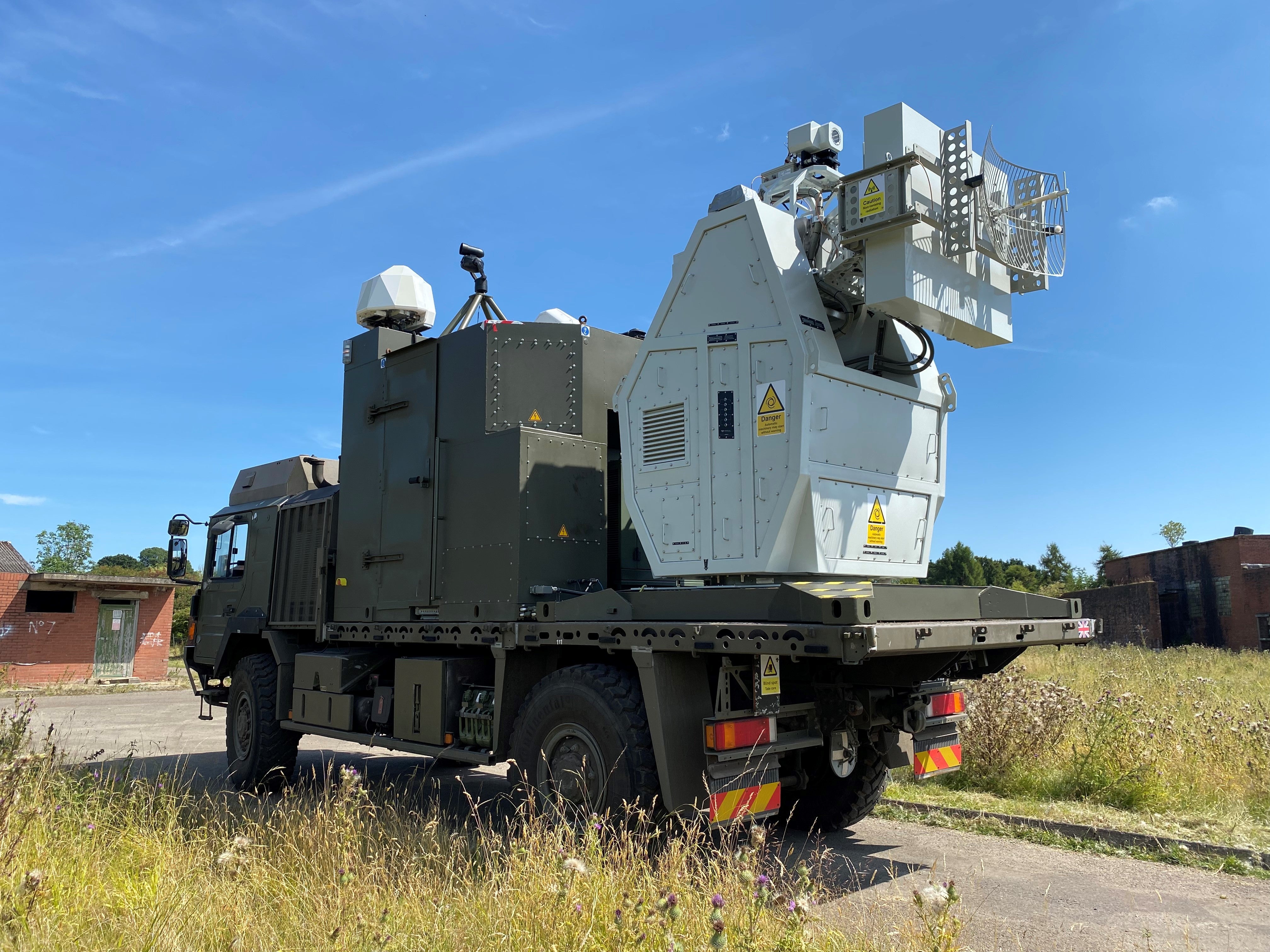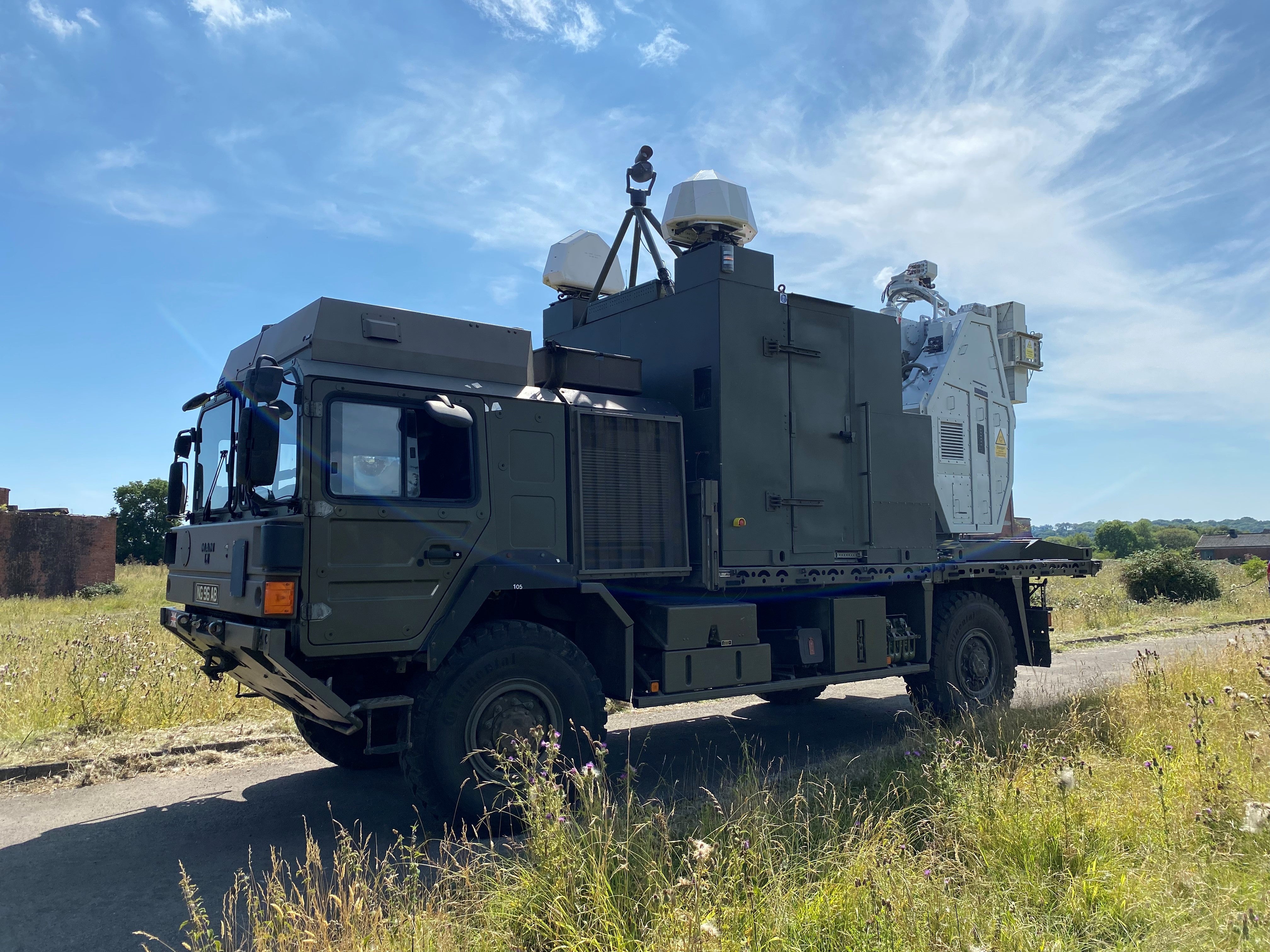British army tests ‘game-changing’ weapon in the war against drones
Weapons such as surface-to-air missiles can cost many times more than the drones they are trying to shoot down

Your support helps us to tell the story
From reproductive rights to climate change to Big Tech, The Independent is on the ground when the story is developing. Whether it's investigating the financials of Elon Musk's pro-Trump PAC or producing our latest documentary, 'The A Word', which shines a light on the American women fighting for reproductive rights, we know how important it is to parse out the facts from the messaging.
At such a critical moment in US history, we need reporters on the ground. Your donation allows us to keep sending journalists to speak to both sides of the story.
The Independent is trusted by Americans across the entire political spectrum. And unlike many other quality news outlets, we choose not to lock Americans out of our reporting and analysis with paywalls. We believe quality journalism should be available to everyone, paid for by those who can afford it.
Your support makes all the difference.A new ‘game-changing’ weapon to take out enemy drones has been trialled by British soldiers.
The radio frequency-directed energy weapon (RFDEW) is intended to detect, track and destroy a range of threats across land, air and sea up to a kilometre (0.62 miles) away.
It uses high-frequency radio waves to take down drones. Defence minister Maria Eagle said it was a “potentially game-changing” weapon.
The war in Ukraine and Houthi attacks on Red Sea shipping have demonstrated how low-cost drones can have a devastating impact.
Traditional weapons such as surface-to-air missiles can cost many times more than the drones they are trying to shoot down but the RFDEW costs only 10p to fire.
The high-frequency waves disrupt or damage critical electronic components inside targets such as unmanned vehicles, causing them to be immobilised or fall out of the sky.
Defence procurement minister Ms Eagle said: “The successful firing by the British soldiers of our radio frequency directed energy weapon is another step forward for a potentially game-changing sovereign weapon for the UK.
“It’s great to see defence experts and industry working collaboratively to put cutting-edge equipment in the hands of our armed forces.
“This is a demonstration of the UK remaining at the forefront of directed energy weapons and developing a crucial advantage against the emerging threats we face.”

The army successfully trialled a demonstrator version of the RFDEW in a live firing exercise against drones at a range in west Wales.
The development system has been produced by a consortium led by Thales UK, including sub-contractors QinetiQ, Teledyne e2v and Horiba Mira, and supports up to 135 high-skilled jobs in the UK.
Earlier this year it was reported a new British military laser could be rushed onto the front line in Ukraine to take down Russian drones.
The DragonFire weapon, which is expected to be ready for deployment by 2027 at the latest, could have “huge ramifications” for the conflict in Europe, the Defence Secretary said at the time.
New reforms aimed at speeding up procurement mean the laser, originally set to be rolled out in 2032, will now be operational five years earlier than planned, according to the Ministry of Defence.
Join our commenting forum
Join thought-provoking conversations, follow other Independent readers and see their replies
Comments